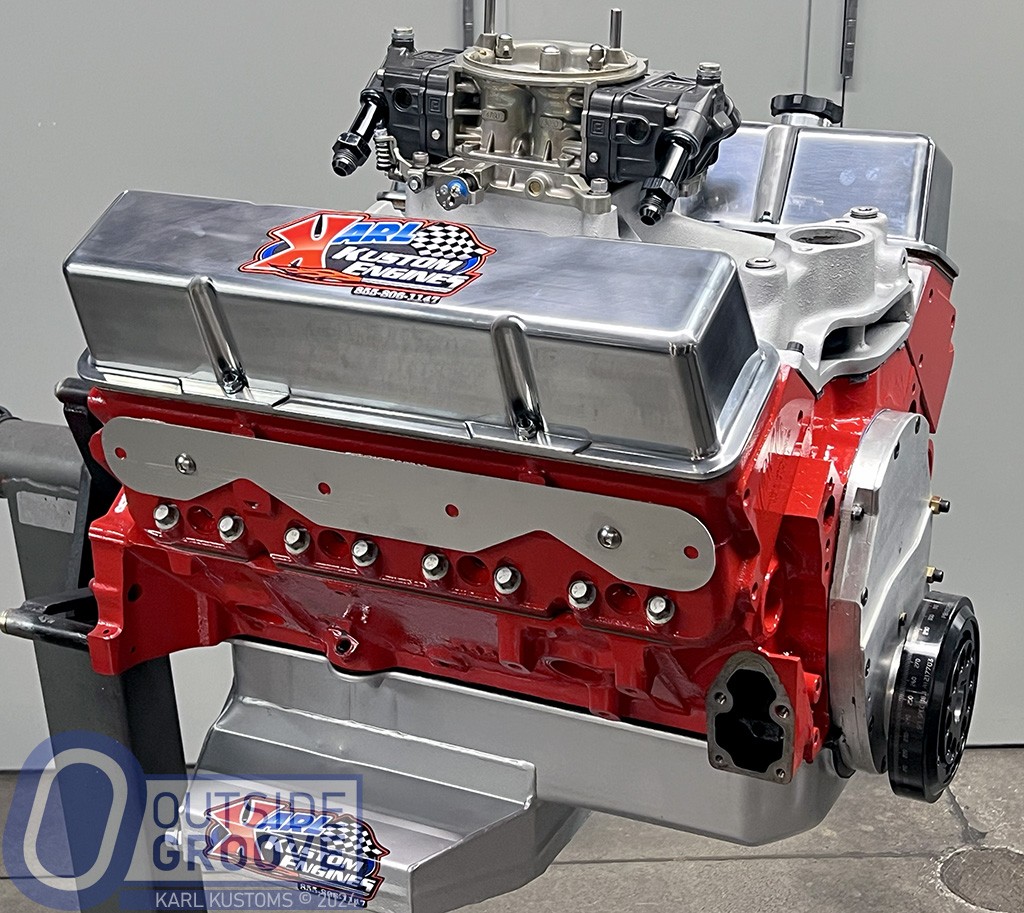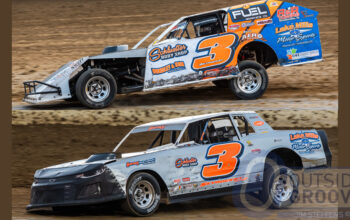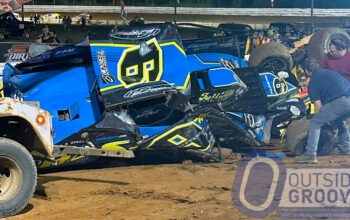IMCA modified racers will have a third engine choice for 2025: a spec engine. It comes in addition to the sanctioning body’s existing claim and crate options. What does it mean for engine builders and racers? We asked a few for their thoughts.
“The spec engine can be built from a 604 crate short block or can be built from scratch,” said IMCA President Brett Root in a press release. “It uses parts drivers and builders are already familiar with in a third engine option. Both drivers and builders will be able to use known components to build these engines.”
Required Parts for IMCA Spec Engine
The spec engine must use EngineQuest or Dart cylinder heads, an Edelbrock intake manifold, and a maximum 6,800 rpm rev limiter. Scat Pro Series and Eagle FSI connecting rods may be used. Likewise, a roller camshaft with a GM lifter part No. 5234890 or Melling JB2079.
“Because the 604 crate uses fast burn aluminum heads, I don’t know if the new spec engine with steel Dart heads will be any better than the 604 crate,” Shaun Simmons, of Karl Kustoms, said. “GM did its homework when building the 604 crate. You can use their camshaft, lifters, and lower end, but will there be a gain or loss when you add the aftermarket stuff? Only the dyno will tell.”
Root expressed his opinion in the IMCA press release.
“We have built and dynoed one of these engines since the end of the [2024] point season,” said Root. “Its performance is very, very compatible to a 604 while having some of the characteristics of a claim motor. You can start with a 604, SportMod claim engine or a Stock Car 500 cfm engine option and build one of these engines.”
Other Required Parts
The rules also specify “OEM GM cast iron roller cam block part nos. 14011148, 14088526, 14093638, 10243880.”
“The spec engine IMCA is allowing has some good points,” Kevin Stoa, of KS Engineering, said. “I like the blocks they require. It’s a little bit different than the ones used in B-mods and stock cars. We’ve been struggling to find those blocks as it is. The blocks for the IMCA spec engine should be plentiful.”
However, Stoa was concerned with having valve spring rules similar to the 604 crate engine. The spec engine rules specify a maximum of 100 lb. of seat pressure.
“Racers will run into some trouble getting that valve spring to work, resulting in the possibility of breakage and failures because there is not enough valve,” said Stoa. “When valve springs limit rpm, it is a dangerous situation creating valve spring float, which in turn breaks parts and can even junk a whole engine. When building an open motor, we can use a higher rate valve spring that keeps the valve from floating.”
Spoiler Size
Racers running the package can run a spoiler up to two inches, just like those who use crate engines.
“What makes it a good deal for everybody is allowing a spoiler in back of the cars powered by a crate or spec engine the balance out the playing field — open motors would have no spoiler,” Billy Fisher, of Fisher Race Engines, said. “When they put the crate motors in the IMCA modified division, it changed modified racing. It was done to give the guys in back an opportunity to run up front with the guys that were winning all the time. But as years progressed, those same guys who always won rose to the front again. A lot of the modified drivers switched over to the stock car division because they didn’t want to race with a crate engine”
IMCA national modified champion Chaz Baca was not sure how the combination of the IMCA spec engine cylinder head and spoiler will perform.
“With steel heads on the engine, you are adding 30 lb. to 35 lb. onto the front end [compared to] the aluminum heads used on the crate engine,” said Baca. “This will not help the car’s traction — it will take it away from the rear and move it to the front. The spec engine car will be more competitive because it will have a spoiler like the crate cars. I predict that a spec engine car will be good when a track is super hammer down. But, once it slicks off, the crate engine car will prevail.”
Final Thoughts
Many engine builders cautiously applaud the new IMCA spec engine option.
“When the price of the modified got out of control years ago, it was always the engine builder’s fault,” Fisher said. “The 604 crate never saved anyone any money, simply because the savings was put into the chassis. Shock prices soared, as did every other part on the chassis. The new spec engine will be similar to what is in sport mods. This engine could have potential, as long as everyone doesn’t go crazy. IMCA has to put the rules out there, and as long as they are enforced, this engine could save money in the long run.”
Engine builders also praised the bit of freedom the spec engine package allowed.
“This engine will allow racers to do their own thing — something they couldn’t do with the sealed 604 crate engine,” said Stoa. “For example, you can fix an oil leak yourself and save a few hundred dollars.”
How much will a spec engine actually cost? To be determined at Karl Kustoms.
“After testing, we can get a good quote on what the engine will cost with the components chosen,” Simmons said. “I’m hoping for in the range of $12,000.”

Mike Adaskaveg has written hundreds of stories since the website’s inception. This year marks his 54th year of covering auto racing. Adaskaveg got his start working for track photographer Lloyd Burnham at Connecticut’s Stafford Motor Speedway in 1970. Since then, he’s been a columnist, writer, and photographer, in racing and in mainstream media, for several outlets, including the Journal Inquirer, Boston Herald, Stock Car Racing, and Speedway Illustrated. Among Adaskaveg’s many awards are the 1992 Eastern Motorsport Press Association (EMPA) Ace Lane Photographer of the Year and the 2019 National Motorsports Press Association (NMPA) George Cunningham Writer of the Year.





